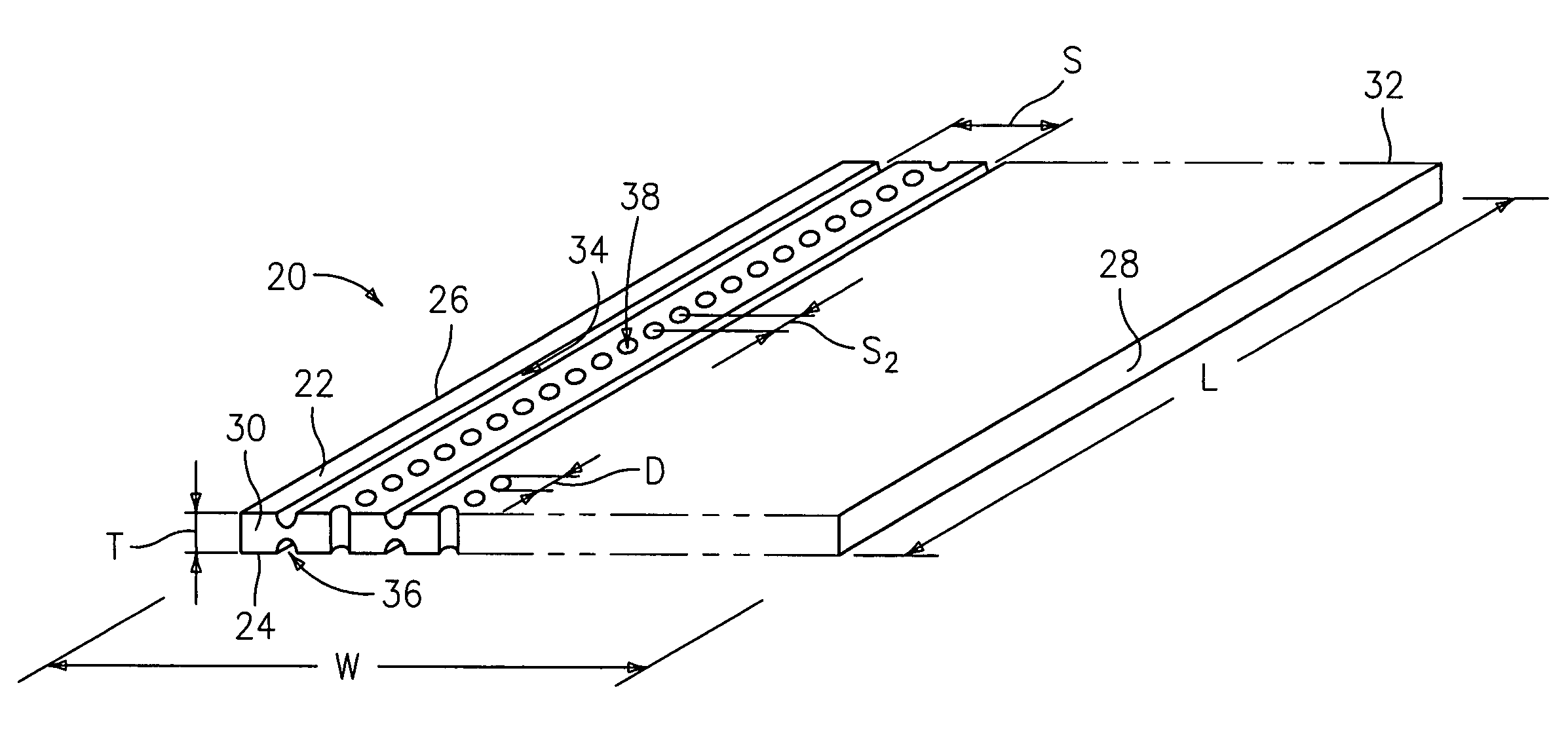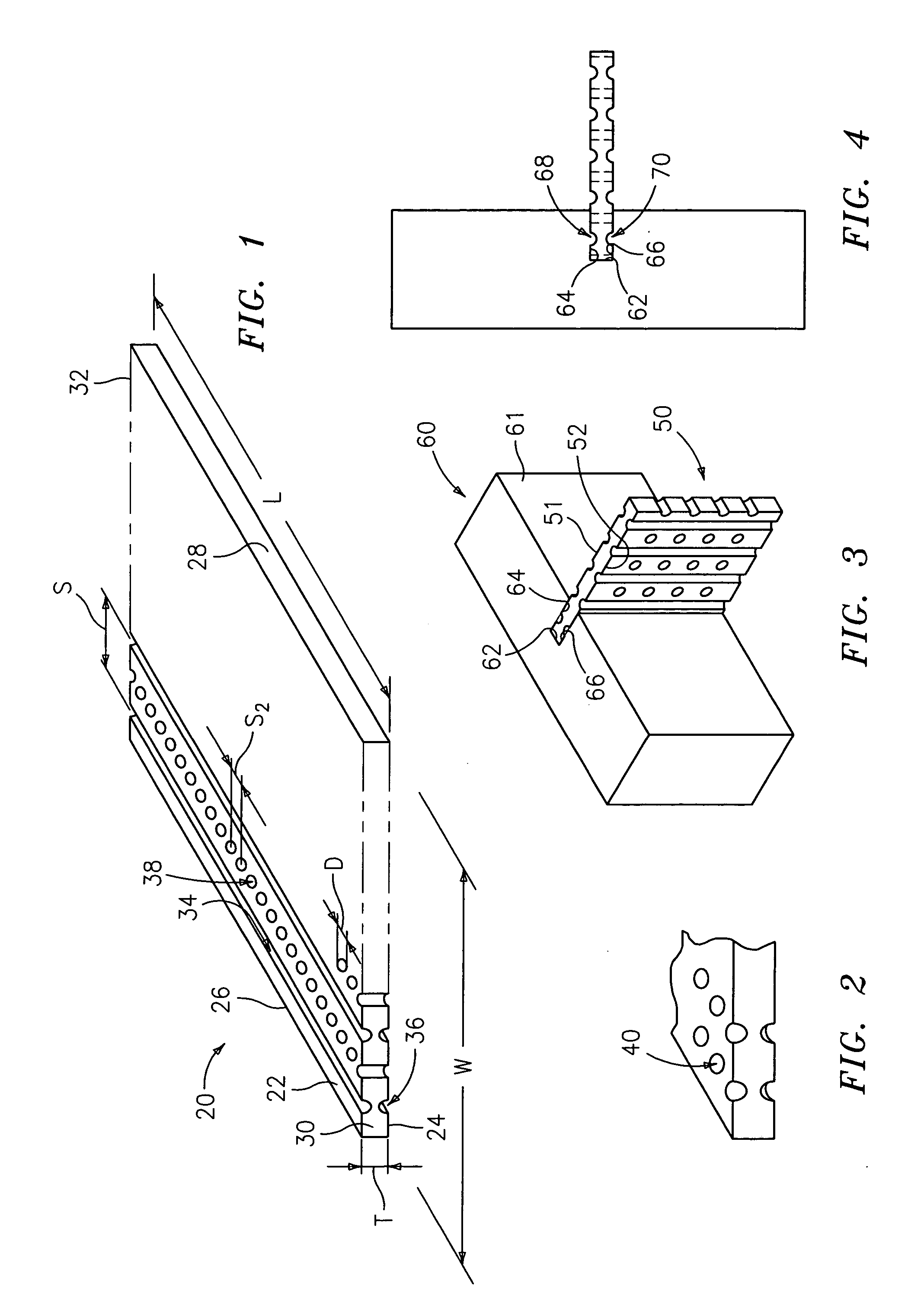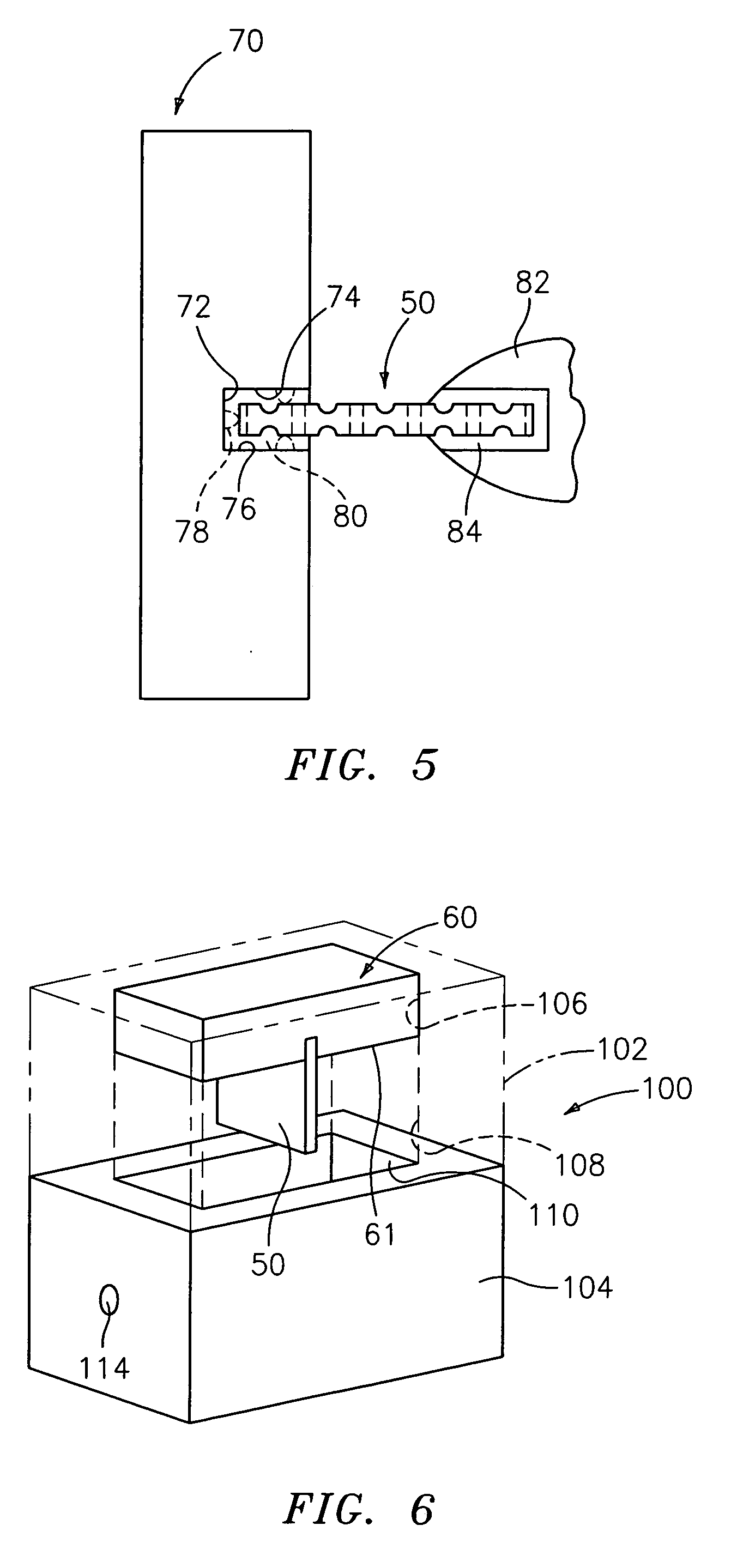Investment casting cores and methods
- Summary
- Abstract
- Description
- Claims
- Application Information
AI Technical Summary
Benefits of technology
Problems solved by technology
Method used
Image
Examples
Embodiment Construction
[0022]FIG. 1 shows a refractory metal-based sheet 20 for forming refractory metal cores for investment casting. Exemplary sheet materials include Mo, Nb, Ta, and W, alone or in combination and in elemental form, alloys, intermetallics, and the like. The exemplary sheet 20 is initially essentially flat having a thickness T between first and second surfaces 22 and 24. Exemplary thicknesses T are 0.2-5.0 mm. The sheet has a width W between perimeter edge surfaces 26 and 28 and a length L between perimeter end surfaces 30 and 32. Exemplary widths and lengths are much larger than T and may be from several centimeters upward.
[0023] According to one aspect of the invention, the sheet 20 may be pre-formed with surface features or other enhancements to serve one or more useful functions during the investment casting process. The exemplary sheet of FIG. 1 has enhancements including a first regular array of channel recesses 34 in the surface 22. The exemplary recesses 34 are linear at a const...
PUM
 Login to View More
Login to View More Abstract
Description
Claims
Application Information
 Login to View More
Login to View More - R&D Engineer
- R&D Manager
- IP Professional
- Industry Leading Data Capabilities
- Powerful AI technology
- Patent DNA Extraction
Browse by: Latest US Patents, China's latest patents, Technical Efficacy Thesaurus, Application Domain, Technology Topic, Popular Technical Reports.
© 2024 PatSnap. All rights reserved.Legal|Privacy policy|Modern Slavery Act Transparency Statement|Sitemap|About US| Contact US: help@patsnap.com










